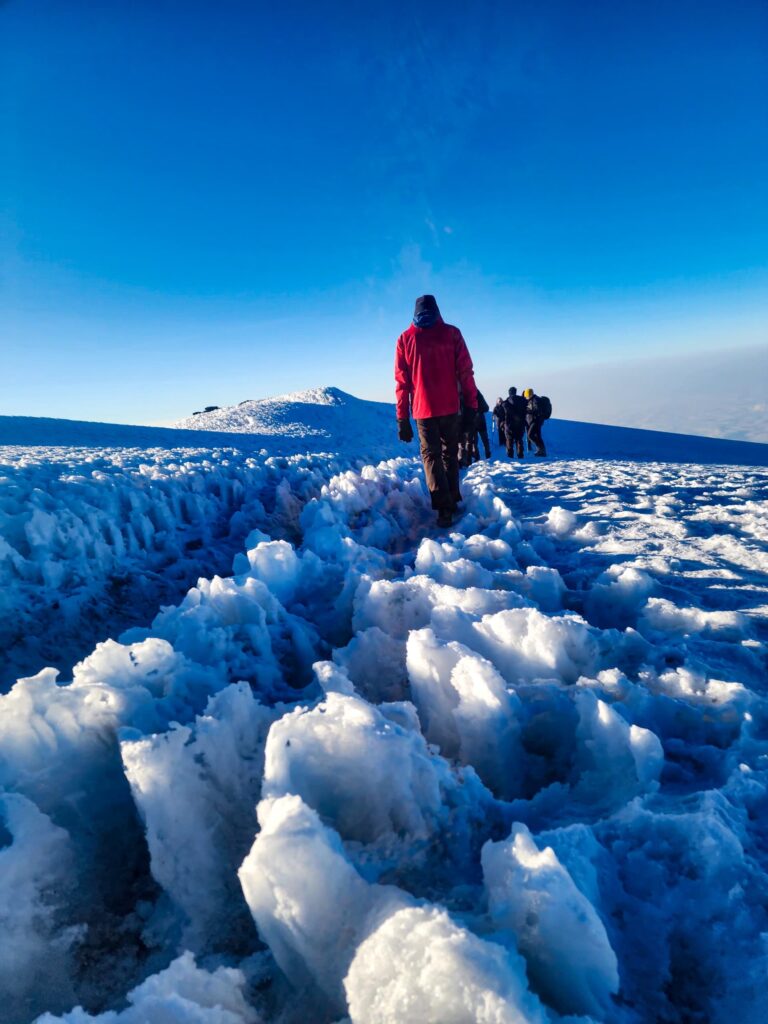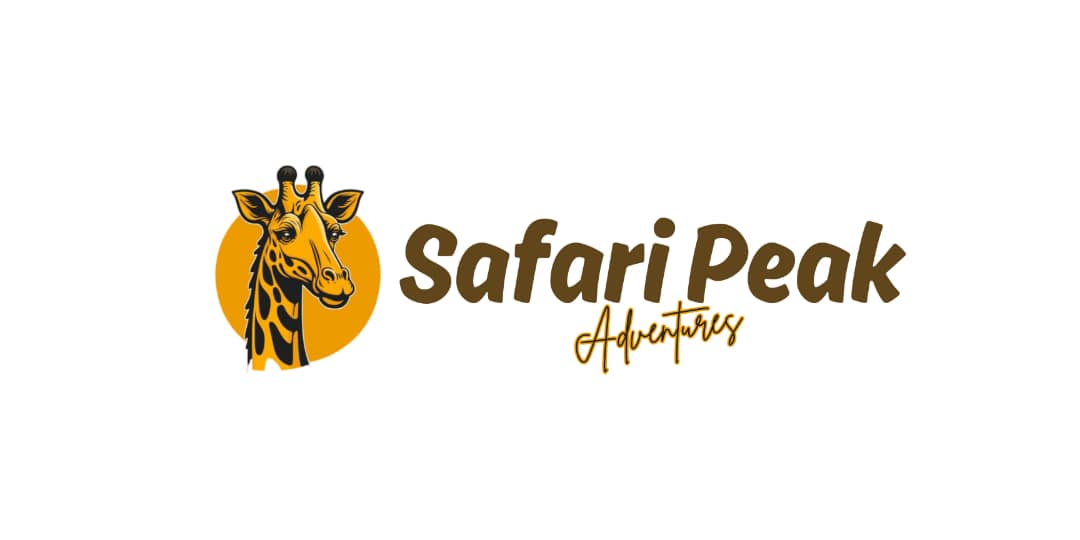Climbing Kilimanjaro
Climbing Mount Kilimanjaro – The Ultimate Adventure to Africa’s Highest Peak
Mount Kilimanjaro, standing tall at 5,895 meters (19,341 ft), is not only Africa’s highest peak but also one of the most iconic trekking destinations in the world. Known as the “Roof of Africa”, Kilimanjaro attracts thousands of adventure seekers every year who dream of conquering this legendary mountain.
What makes climbing Kilimanjaro truly unique is the diversity of its landscapes. Trekkers begin their journey in lush rainforests, pass through alpine meadows, traverse rocky deserts, and finally reach the icy glaciers at the summit. Each day on the mountain brings a new ecosystem, offering one of the most dramatic trekking experiences on earth.
Kilimanjaro offers several routes—from the scenic Lemosho Route to the popular Machame Route—catering to all levels of climbers. Whether you are a first-time trekker or an experienced hiker, there is a path to suit your adventure.
Reaching Uhuru Peak, the highest point on Kilimanjaro, is more than just a physical achievement; it is a journey of determination, resilience, and awe-inspiring beauty. The reward is standing above the clouds, gazing across endless African landscapes, and experiencing a sense of accomplishment that stays with you for a lifetime.
For those seeking a true bucket-list adventure, climbing Mount Kilimanjaro is an unforgettable experience—an expedition that combines challenge, natural wonder, and the thrill of standing at the top of Africa.


Our Top Kilimanjaro Deals
Learn More About Kilimanjaro the Highest Free Standing Mountain in the World
Mount Kilimanjaro, standing at 5,895 meters, is a world-renowned destination for trekking and adventure. It boasts several trekking routes that cater to different levels of climbers, from beginners to seasoned mountaineers. The most popular routes include the Marangu Route, known as the “Coca-Cola Route” for its easier path and hut accommodations, and the Machame Route, which offers stunning views and a more challenging ascent. Other routes, such as the Lemosho, Rongai, and Northern Circuit, provide varied experiences, with some offering fewer crowds, unique landscapes, and higher success rates. Each route has its own charm, allowing trekkers to choose one that suits their preferences and abilities.
The history of Kilimanjaro’s exploration and trekking dates back to the late 19th century when it was first ascended by German missionary Johannes Rebmann in 1848. Kilimanjaro quickly became a symbol of African adventure, attracting explorers and mountaineers from around the globe. Over the years, it has gained global recognition not only for its majestic beauty but also for being one of the easiest mountains to summit. Despite its height, no technical climbing skills are required, making it accessible to a wide range of trekkers. However, the trek is still challenging, and preparation is key to success.
One of the most common questions for adventurers planning a Kilimanjaro trek is about cost. The climb Kilimanjaro cost typically ranges between $2,000 and $6,000 per person, depending on the chosen route, number of days, and the level of service provided. Factors that affect the price include park fees, guide and porter wages, meals, equipment, and accommodation before and after the climb. While budget operators exist, choosing a reputable company with experienced guides is highly recommended to ensure safety, comfort, and a higher chance of reaching the summit. Many climbers view the cost as an investment in a once-in-a-lifetime adventure at the Roof of Africa.
Kilimanjaro has also become a hotspot for record-breaking achievements. The fastest ascent and descent records have been set by various mountaineers, with some completing the round trip in under 6 hours. In 2003, Tanzanian guide Sundiata Khamis set the record for the fastest ascent, reaching the summit in just 4 hours and 16 minutes. The mountain has also seen remarkable feats, such as the first female ascent in 1976 and numerous charity climbs, where trekkers have raised millions for causes around the world. These record-breaking events highlight the mountain’s allure and challenge, making it a thrilling destination for those seeking adventure and achievement.
In addition to its physical challenge, climbing Kilimanjaro offers trekkers a unique opportunity to experience its diverse ecosystems. From tropical rainforests to alpine deserts and glacial landscapes, the trek takes climbers through a variety of environments, each with its own flora and fauna. As one of the most biodiverse regions on Earth, Kilimanjaro is home to various species of plants, birds, and animals. However, the mountain is also facing challenges due to climate change, with its glaciers rapidly melting. This makes climbing Kilimanjaro not only a personal achievement but also a reminder of the environmental issues threatening our planet.
Frequently Asked Questions About Mount Kilimanjaro
What is the best time to climb Mount Kilimanjaro?
The best time to climb Mount Kilimanjaro is during the dry seasons, which are from late June to October and from December to March. These months offer the most favorable weather conditions, with clearer skies and less rain, making the trek more enjoyable and safer. The dry season also coincides with the highest number of trekkers, providing a lively atmosphere and optimal trail conditions.
However, it’s important to note that Kilimanjaro’s weather can be unpredictable. Even during the dry seasons, temperatures can drop significantly at higher altitudes, and rain showers can still occur, especially at the lower elevations. Proper preparation for all weather conditions is crucial, regardless of the time of year.
How difficult is it to climb Kilimanjaro?
Climbing Mount Kilimanjaro is challenging but not technically difficult. No mountaineering experience is required, as trekkers only need to navigate trails that vary in difficulty depending on the route chosen. The challenge mainly comes from the altitude, with many trekkers experiencing altitude sickness as they ascend. Acclimatization is key to reducing the risk of altitude sickness, which is why routes with longer itineraries are often preferred.
While physical fitness plays a role in your ability to summit, the main hurdle is adjusting to the altitude. With the right pace, hydration, and rest, most people in good health can successfully reach the summit. Trekkers should be mentally prepared for a challenging journey and committed to the necessary physical training before embarking on their climb.
How long does it take to climb Kilimanjaro?
The typical Kilimanjaro trek takes 6 to 9 days, depending on the chosen route and acclimatization schedule. Shorter routes like the Marangu Route can be completed in as little as 5 days, but these have a lower success rate due to insufficient time for altitude acclimatization. Longer routes like the Lemosho or Northern Circuit are recommended for better acclimatization and higher chances of reaching the summit.
Most trekkers opt for a 7-day trek, which offers a balance of time for acclimatization and enough rest days to increase the likelihood of summiting successfully. The pace of the trek is gradual, with rest days at high altitudes to allow climbers to adjust to the decreasing oxygen levels.
What should I pack for climbing Kilimanjaro?
Packing for Kilimanjaro requires a mix of lightweight, moisture-wicking clothing for the lower altitudes and warm layers for higher elevations. Key items include a good quality sleeping bag, a waterproof jacket, sunscreen, gloves, a hat, and sturdy trekking boots. A daypack, water bottles, and a camera for capturing the views are also essential.
Trekkers should also bring a first-aid kit, snacks, a headlamp, and personal hygiene products. Due to the varying weather conditions, layering is important to stay comfortable, and trekking poles are recommended to assist with the climb, especially during steeper sections.
What are the risks of climbing Kilimanjaro?
The main risks of climbing Kilimanjaro are altitude sickness, extreme weather, and physical exhaustion. As trekkers ascend, the reduced oxygen levels at higher altitudes can cause symptoms of altitude sickness, such as headaches, dizziness, and nausea. To mitigate these risks, proper acclimatization, hydration, and listening to your guide’s advice are critical.
Additionally, climbers should be prepared for temperature extremes, as the weather can range from tropical heat to freezing cold at the summit. While the trek is not technically difficult, the physical demands of high-altitude hiking can lead to fatigue or injury. Choosing a reputable guide and training properly beforehand can help minimize these risks and ensure a safe and successful climb.

